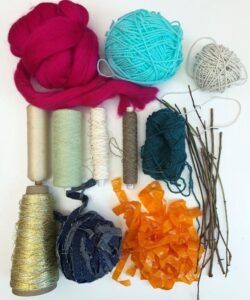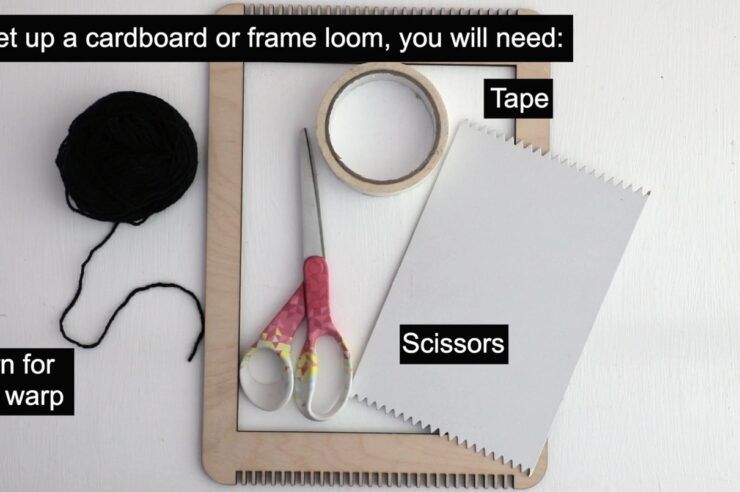The weaving tutorials only feature fabric made with black and white yarns to make it easier for you to see, however the list of materials that you can weave with is endless. The key to making your own unique designs is to experiment and have a play with a range of textures, colours and thicknesses of yarns and found materials. Combine lots of these together along with different weaving techniques and see how they interact with one another…
Natural Yarns
Natural yarns are made from either animal or plant based fibres.
Examples include:
Animal
Wool (Sheep wool, mohair, merino, alpaca…), Silk (made from the silk worm)
Plant
Cotton, Linen, Paper Yarn, Hemp, Jute, Bamboo Yarn
Synthetic Yarns
Synthetic yarns have been completely manmade, and are sought after as a cheaper option than natural yarns. They can also produce very fancy looking yarns.
Examples:
Acrylic wool, Plastic Yarns, Metallics, Nylon, Polyester, Viscose
Unconventional/Unusual Weaving Materials
You are not limited to using only yarns for weaving. Discover new weaving materials from a variety of different found objects.
Examples include:
Plastic bag strips, Paper strips, Twigs, Fabric scraps, Washers/Beading, Flowers, Wires, Lolly pop sticks, Pipe cleaners
Experiment and have fun!
If you would like a copy of the lesson worksheet issued to you, please send the TH.CARS2 team an email request using the link under ‘Related links’ below.



